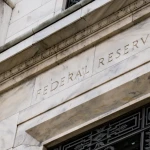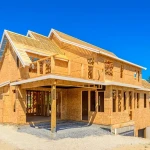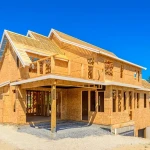- Building permits issued in July fell to 1,396,000 (SAAR). That’s 4% below the revised June rate and 7% lower than a year ago.
- Housing starts fell to 1,238,000 (SAAR) in July, down 6.8% from the revised June estimate and 16% lower than a year ago, according to the U.S. Census Bureau.
- Single-family housing starts decreased to 851,000 (SAAR) in July, down 14.1% from June and 14.8% below last July.
What happened: In July, housing starts fell mostly due to a slowdown in new single-family construction. While multi-family construction has now rebounded for two consecutive months, starts for buildings with 5-or more units are still 21.8% below year ago levels.
Why this matters: Fewer single-family homes were built compared to the previous month, as home sales remained weak and price growth slowed. Aside from the pandemic boom in new construction that peaked in 2022, there are still more single-family homes under construction than at any point in the last 17 years. However, the pace has been slowing since the Federal Reserve began raising interest rates.
The decline in single-family housing starts reflects a cautious outlook from builders largely due to easing housing sales and rising inventory. The surge in mortgage rates this spring stretched housing affordability and caused demand to coast at a time where it usually accelerates. According to Zillow data, homes that sold went pending in just 18 days – three more days than a month ago. While appropriately priced homes still sell fast, most homes are staying on the market longer. Despite expectations of a rebound, home sales in the first half of this year remained below last year’s levels, while the total for-sale inventory is higher compared to this time last year.
Looking ahead, mortgage rates eased considerably in August and a decline in the number of existing homes coming on the for-sale market during the second half of this year could still leave the door wide open for newly built homes.
Successful builders are using incentives to make the math work for homebuyers. According to the National Association of Home Builders, sixty-one percent of builders were using sales incentives other than price cuts to improve sales in July. Even though more builders are reducing their prices, with the share increasing to 31% from 29% in July, the average price cut has held steady at 6%.
While retail sales data in July beat expectations, housing starts and construction spending fell. Historically, a decline in new construction has been a leading indicator of a broader economic slowdown. Less restrictive monetary policy should help revive construction spending. The Fed is widely expected to begin its cutting cycle in September.
 Mortgage Rates Eased Slightly This Week On Employment Data Revisions And Fed Minutes
Mortgage Rates Eased Slightly This Week On Employment Data Revisions And Fed Minutes
 July 2024 Housing Starts: Housing Starts Fall, Single Family Starts At Lowest Level Since April 2023
July 2024 Housing Starts: Housing Starts Fall, Single Family Starts At Lowest Level Since April 2023
 Singapore Overtakes Hong Kong In Terms Of Property Investment Prospects
Singapore Overtakes Hong Kong In Terms Of Property Investment Prospects
 May 2024: New Home Sales Fell Despite Easing Mortgage Rates in May
May 2024: New Home Sales Fell Despite Easing Mortgage Rates in May
 June 2024 Housing Starts: Housing Starts Rebound in June, Single-Family Construction Slows Less Than Expected
June 2024 Housing Starts: Housing Starts Rebound in June, Single-Family Construction Slows Less Than Expected